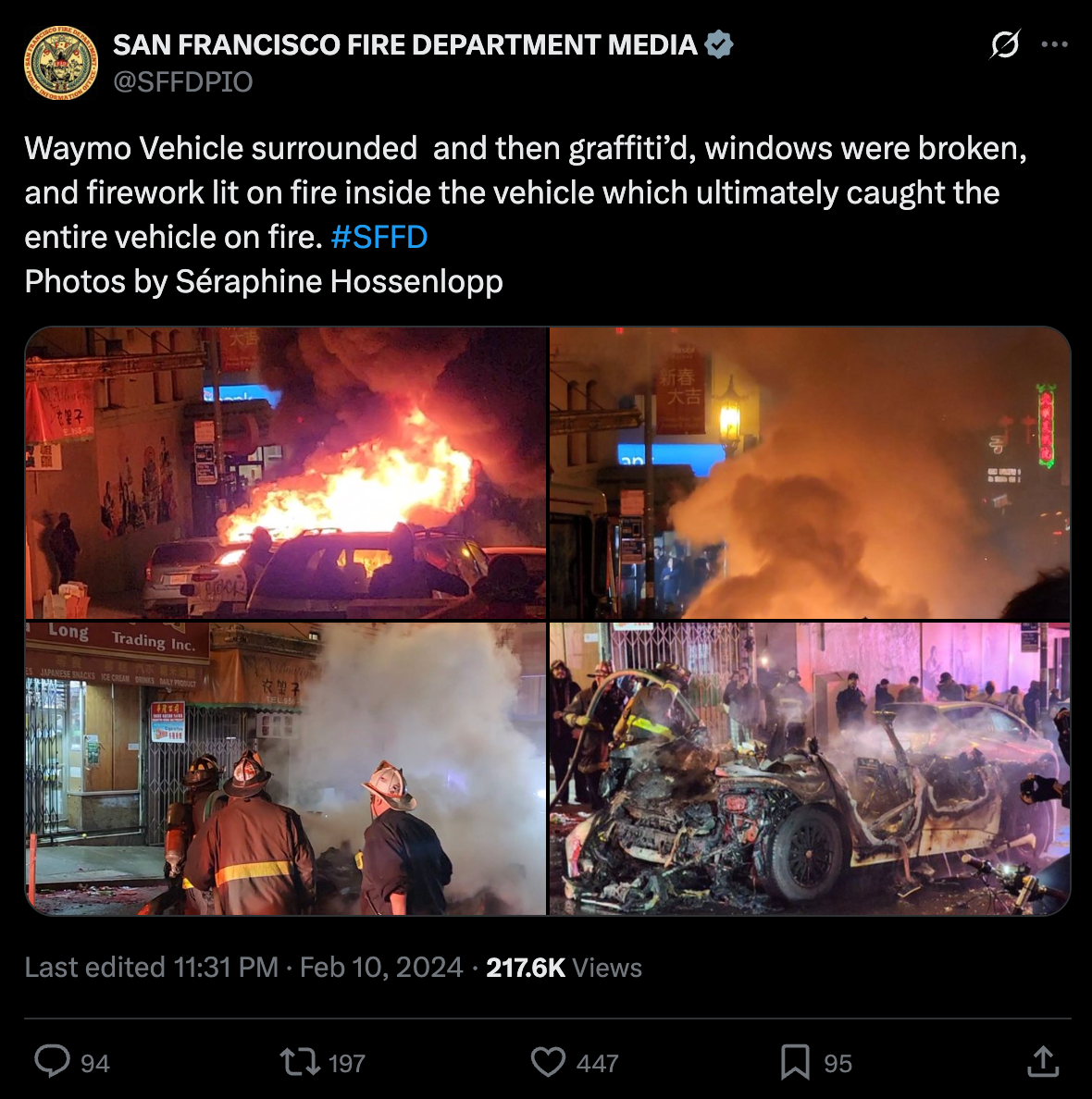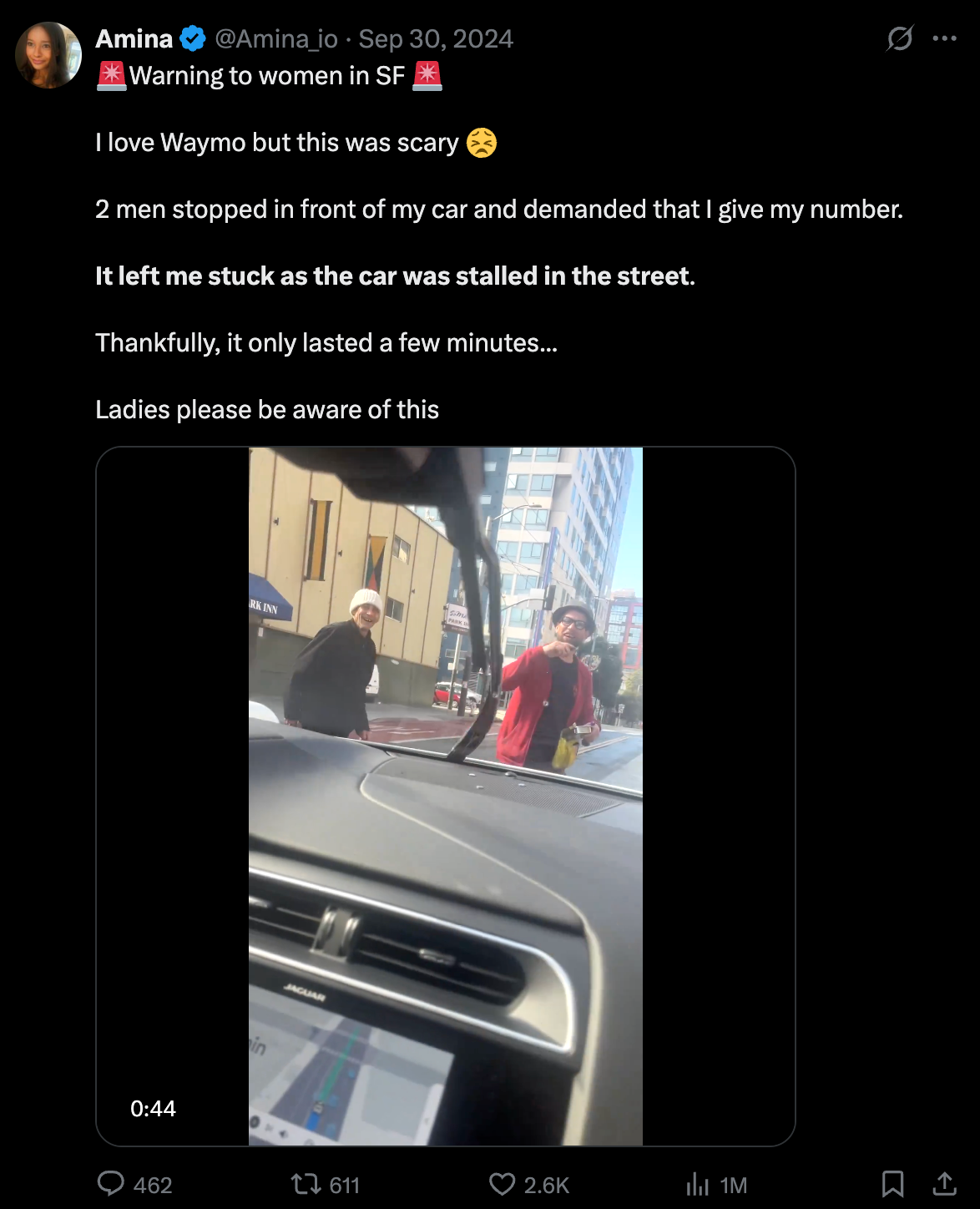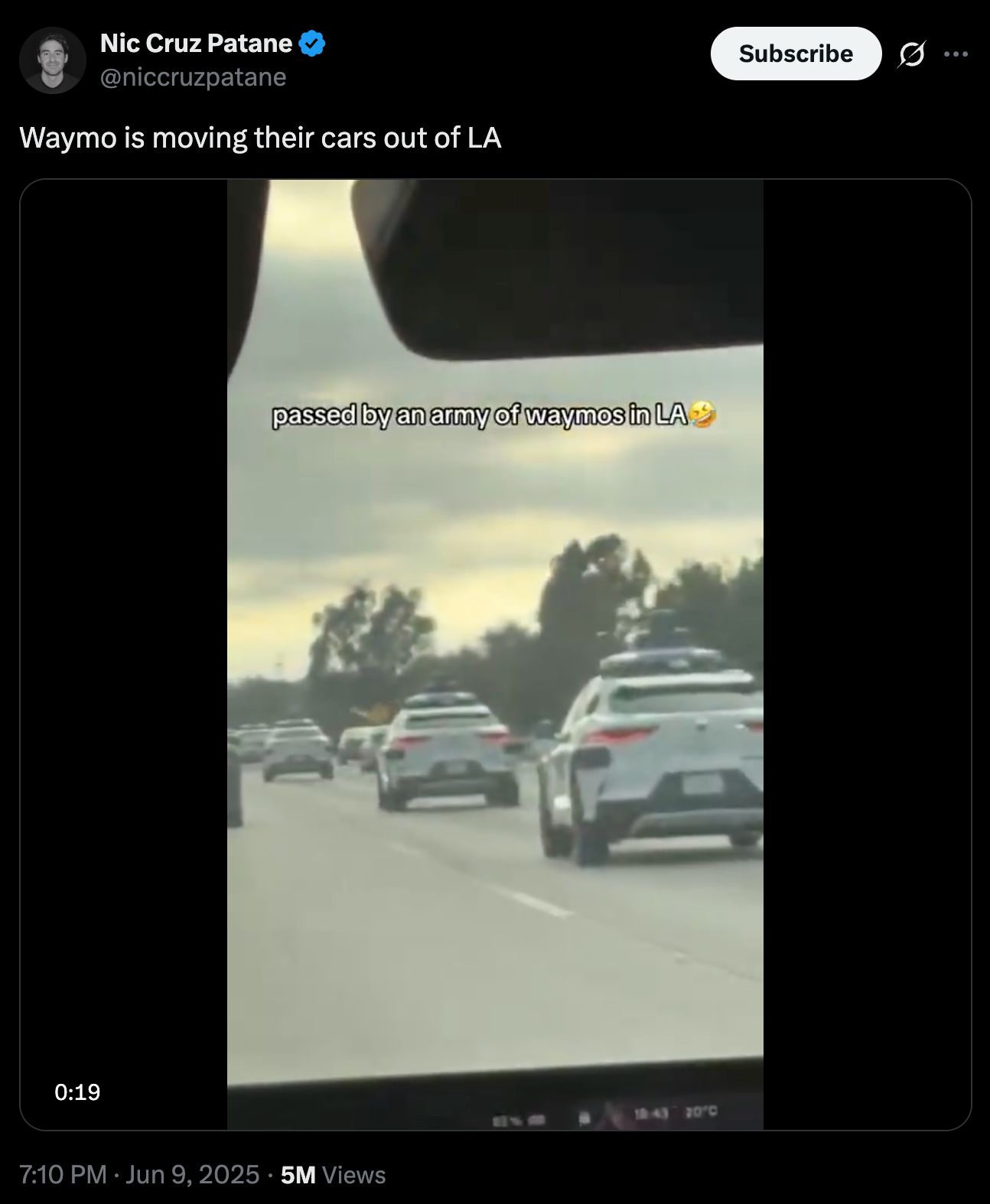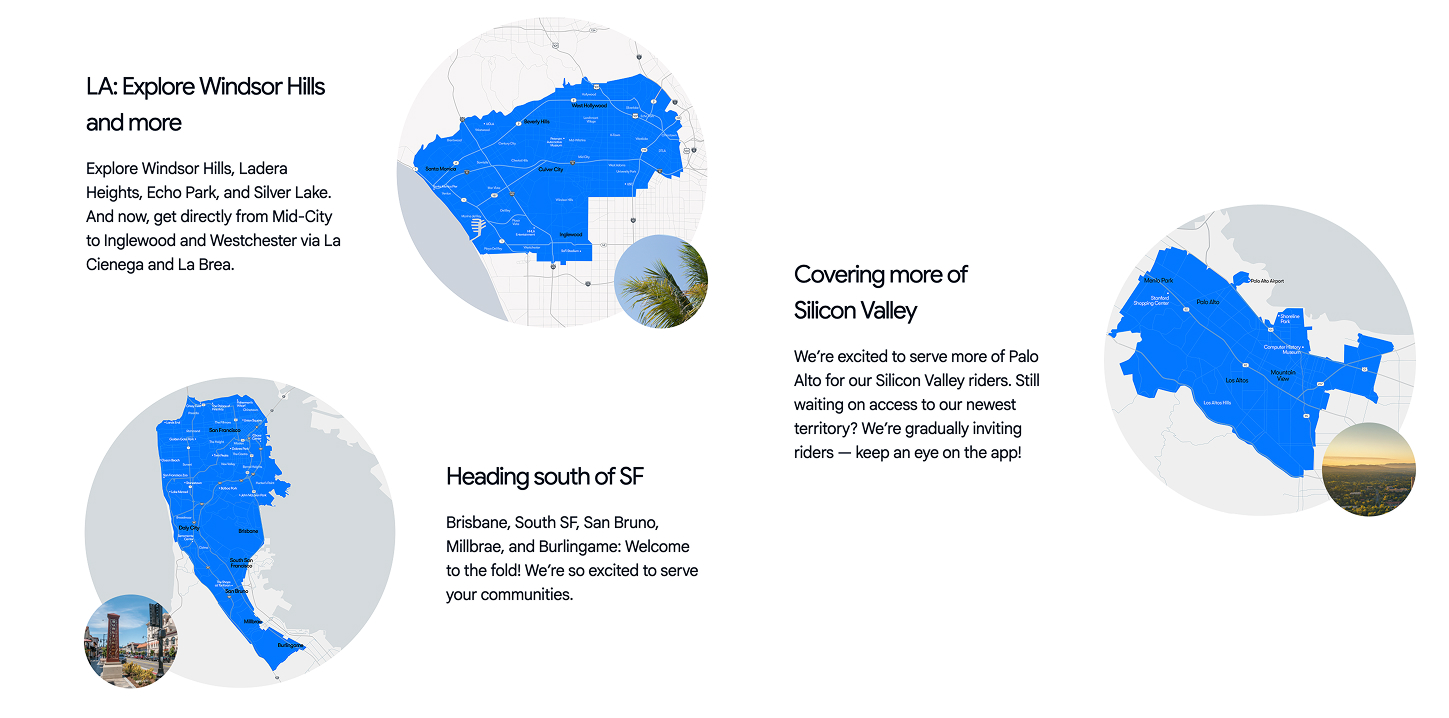
What Does Waymo Mean?Jun 12
we talked to activists, tech founders, and journalists about waymo, the unlikely mascot of the LA riots
Oct 1, 2025

In late August, Waymo quietly unleashed eight vehicles onto New York City streets. Each one had a human chaperone, because New York City law requires it (for now). Back in July, I saw an early test vehicle driving up Avenue B, quietly mapping the city’s streets — it was just one car in a cute, unassuming reconnaissance unit, basically preparing the city for the coming army (of Waymos). A few people stopped to stare (I definitely did) but most just politely ignored it.
Taxi and Uber drivers, though? They definitely noticed.
And this summer, they made it known.
“Cancer starts with a dot and then it spreads,” said Fernando Mateo, leader of the Federation of Taxi Drivers, a lobbying group, with a group of protesters outside the Governor’s office. “[Waymo] is a cancer to us.”
The Independent Drivers Guild, a union of Uber and Lyft drivers, railed against the mayor for turning New Yorkers into “lab rats for Silicon Valley investors” — though Waymo paid the city a flat $5k fee to start testing (not a big investment, lol), and most New Yorkers are either ambivalent or eager to ride in one. And then, in what to me was the most… let’s say, inventive… argument at this protest, Mateo said:
“There are a lot of cab drivers that have saved people committing suicide. You have a human being that you can actually share your thoughts with. You can’t do that with a robot.”
Waymos, jfyi, are 80 percent safer than cars driven by people. Mateo’s argument is that more people should die in car accidents so the lives of a few very distraught people can be saved by those saintly cabbies you only really see on Sex and the City, the kind who ask you why you’re not married yet and when you last called your mom, the imaginary and mystical Uncs of New York.
Okay.
If history is any guide, we’ll see more of these protests, and ever more creative arguments against what I believe is inevitable. Already, I’ve heard that New York City just “isn’t built” for self-driving cars, that New Yorkers will get “too lonely” while being driven home from the club, that Waymos can’t survive snow, that the company will never surmount New York State’s legal hurdles.¹ And, of course, I’ve heard that the AVs will kill us. All of which is to say: Waymo’s rise in NY will be long, and clownish, and turbulent. Or maybe, idk, it’ll go super smoothly and New Yorkers will peacefully accept their fate (beautiful, clean autonomous vehicles).
I doubt it, though.
Why?
Walk with me.
In 2022, when Waymo and Cruise² first hit San Francisco streets, a group of activists by the name of “Safe Street Rebels” figured out all you had to do to confuse a Waymo was place a traffic cone on its hood. The lidar sensor would detect the tip of the cone and, unable to tell whether the cone was actually in its path or if its detection system was malfunctioning, it would stop in its tracks.
And so they began popping out of bushes to do this, under cover of night. Sometimes they’d cause minor traffic jams.
“Baby’s first cone!” one of the Safe Street Rebels said after coning for the first time. “It’s so fun. Just a little pushback against a big movement.”
Ostensibly they were advocating for public transportation. They hated that instead of high-speed rail, California was investing in more cars (I do get this argument). They were also opposed to surveillance (even by 2022, Waymo had responded to multiple search warrants for footage from its vehicles).
In the lead-up to the California Public Utilities Commission’s vote on whether to allow Waymo and Cruise to expand service in the Bay Area, protesters declared “Week of Cone,” during which they went HAM on these types of attacks. No one was injured; it was performative. The Guardian published a sort of flattering profile of the activists, with a photo of some dude on a bike, prowling around SF carrying a giant orange cone.
The vote went through. Waymo won. Coning became gauche. Bye.
A few years later, on Lunar New Year in 2024, someone threw a firework inside a Waymo parked on Jackson Street in San Francisco’s Chinatown. Someone else jumped the windshield. A firework was thrown into the vehicle, which caught fire and burned to the ground.

No one knows why this happened, exactly. Probably just mob chaos. Apparently, the innocent Waymo drove straight into a crowd, executing its planned route, and the crowd stopped it, and craziness ensued. It was opportunistic violence.
Waymo responded with a brief statement (“this was a one-off event”) and later that year, doubled its weekly paid rides.
Right before the Lunar New Year fiasco, a San Francisco couple was sitting inside a Waymo when a homeless-looking man walked up to their car and tried to cover its sensor at a green light. It was dark, raining. The couple just sat there, terrified. Eventually the sensor vandal went away and Waymo security arrived.
“We felt trapped in the sense that we didn’t know what to do in that instance,” one of them said. “Do we get out? Was it safe to get out of the car? We literally had no control.”
(Waymo’s advice in this situation is to remain inside the car.)
That same month, Waymo hit a cyclist in Portrero Hill. (They left the scene with minor injuries and were never hospitalized.) Waymo released a statement explaining that the cyclist drove in front of the car quicker than it could brake. Again, the cyclist was fine — but opposition ramped up from there.
The National Highway Traffic Safety Administration began a probe into the company a few months later, after 22 reports of Waymo violating traffic laws (mostly by lightly bumping into gates or rocks), but no serious injuries. The probe ended 14 months later, after the agency found no systemic defects or violations.
Last October, two men (the New York Post labeled them “catcalling bozos”) stood in front of a Waymo while someone was inside, demanding her phone number. She videotaped the entire thing. One of them takes his hat off, trying to… woo her?

Eventually, the guys leave.
Waymo apologizes, and a few months later, they announce that service will expand to Miami.
And then we saw the riots last June. Five Waymos were basically treated like burning effigies, stand-ins for everything hardcore anti-ICE protesters believe is evil: “google” “big tech” “surveillance” “technology” “automation.” I don’t really know if they were consciously thinking any of this — maybe they just wanted to burn things. Actually, that’s probably what it was, at least partially.
Waymo suspended service in parts of downtown LA. A battalion of Waymos were seen fleeing LA, all in a row:

And then, one week later?
Service expansion:

When cars first began replacing horses in the early 20th century, people mocked them as “devil wagons,” toys for the rich, symbols of capitalism running rampant. Carriage unions complained that cars were scaring horses, that cars were dangerous, would injure people (and horses) — which, I mean, cars did. But in exchange, we got cars. And with cars we got almost all of modern America.
We’re at the beginning of another car vs. carriage era, though almost no one can see it — except, probably, the taxi drivers’ union, because they’re already angry. Will people lose their jobs? Yes. Will some people be injured? Will the horses be startled? Will the “devil wagons” race around Manhattan videotaping every single person on the street, and mapping the street grid as they go? Will they turn all that data over to the police? Will we be able to solve crime that much faster? Will some people hate all of this and more? Yeah.
And in exchange, we’ll get self-driving cars.
Safer, probably faster (eventually), cheaper, smarter, and cleaner.
Waymo nationalism is coming, New York. Might as well accept your fate. If you don’t? We’ll probably see five years of confused autonomous vehicles bumbling around trying to dodge activists wielding cones in Times Square, but I’m pretty sure Waymo’s engineers will (eventually) win.
—Harris Sockel
¹ NY doesn’t allow driverless cars w/o a chaperone right now, but two bills currently making their way through the state senate aim to change this.
² Cruise, then owned by GM, caught a pedestrian and dragged them for 20 feet (terrible), after which California’s DMV suspended its permit. The company later quietly pivoted to developing software for regular cars (not fully autonomous vehicles). The woman was hospitalized, lived, and got a ~$10m payout.